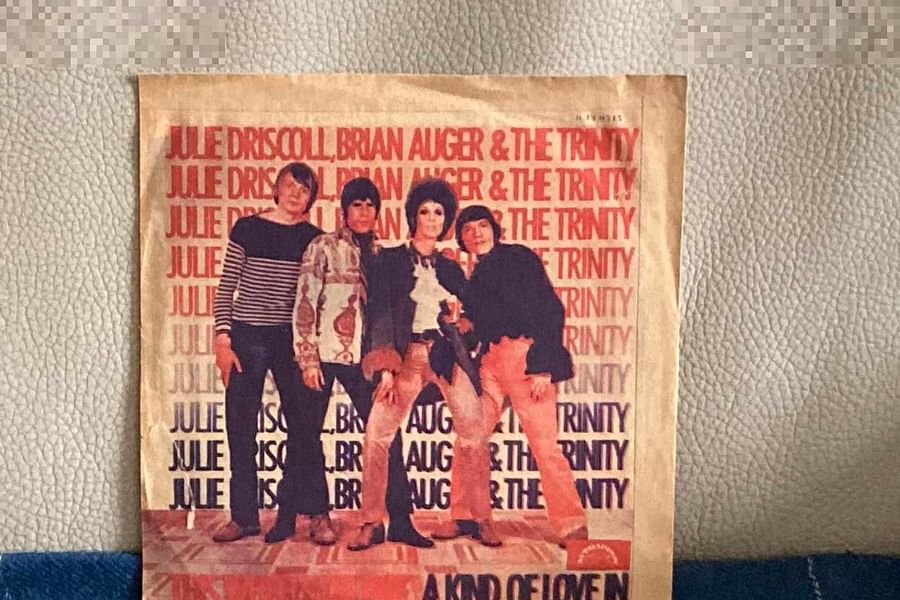John Paul Jones Pre-Led Zeppelin Fame








As we delve into the instruments wielded by rockstars like John Paul Jones, we gain insight into how these tools became extensions of their very essence—enabling them to sculpt sonic landscapes that still resonate today.
In tracing back through the annals of rock history, we find John Paul Jones not merely as a footnote but as a fundamental force in its evolution. The journey from session musician to superstar is fraught with unseen challenges and unsung victories—a path well-trodden by this quiet giant.
To truly appreciate Jones' contribution to music, one must listen—not just hear—the layers within each track he touched. In doing so, we uncover nuances and intricacies that are often overlooked but are essential pieces in understanding what made those records so revolutionary.
In our exploration thus far, we have only scratched the surface. There remains much more beneath those initial brushstrokes—stories untold and melodies unheard—that paint a fuller picture of John Paul Jones' pre-Led Zeppelin fame. Stay tuned as we continue our journey into the depths of this musical maestro's past achievements and enduring legacy.Before the world knew him as the bassist of Led Zeppelin, John Paul Jones was already a name to reckon with in the music industry. His session work throughout the 1960s not only honed his musical prowess but also embedded his influence in some of the era's most iconic tracks. A virtuoso on multiple instruments, Jones' pre-Zeppelin era is a testament to his versatility and musicianship.
John Paul Jones' journey as a session musician saw him collaborating with a plethora of artists, contributing to a mosaic of genres ranging from soul to rock 'n' roll. His musical adaptability during this period was nothing short of remarkable. For instance, his keyboard work on Donovan’s “Sunshine Superman” album showcased an uncanny ability to blend into diverse musical landscapes while leaving his distinct mark.
His arrangement skills were equally sought after, as evidenced by his work with The Rolling Stones on "She's A Rainbow," where he orchestrated the whimsical strings that became integral to the song's psychedelic charm. This period was crucial in shaping Jones’ understanding of music production, which would later be pivotal in Led Zeppelin’s studio endeavors.
Amidst the swirl of London’s swinging '60s, Jones found himself working alongside some of the most influential figures in music. His bass lines for Lulu's "To Sir With Love" and Herman's Hermits are just a few examples where his contributions underpinned chart-topping hits. It wasn't just about being part of the background; it was about setting a stage where future legends could shine.






The sheer breadth of artists he worked with is staggering—from Jeff Beck to Cat Stevens—each collaboration allowed him to imprint his signature style across various soundscapes. His role in these partnerships wasn't merely transactional; it was transformative, pushing the boundaries of what popular music could be at that time.
The culmination of John Paul Jones’ pre-Zeppelin career set the stage for what would become one of rock’s most legendary bands. It was through his session work that he met Jimmy Page, leading to their fateful collaboration. The formation of Led Zeppelin wasn't just about bringing together four talented musicians; it was about creating a new sonic experience that synthesized their collective experiences and skills.
This synergy is evident in how Led Zeppelin's sound carried echoes from each member's past, yet pushed forward into uncharted territories. With Jones’ multifaceted talent anchoring the rhythm section, Zeppelin went on to redefine rock music and inspire countless musicians who followed in their wake.
In exploring John Paul Jones' pre-Led Zeppelin fame, we uncover not just a backstory but a blueprint for musical innovation. His journey reminds us that behind every legend lies a rich history of growth and collaboration—a narrative woven into every note they play.
As we delve deeper into history, we find that our heroes are often unsung long before they step into the limelight. They craft their legacies note by note, project by project—each one an integral step towards immortality in music lore. John Paul Jones' pre-Zeppelin era is more than just an interesting tidbit; it is an essential chapter in understanding how legends are made.
To further explore the fascinating journey that led John Paul Jones to international stardom with Led Zeppelin, engage with our interactive content below:
Before he became the bassist for the legendary rock band Led Zeppelin, John Paul Jones was an accomplished session musician. Test your knowledge on his extensive session work before he joined one of the greatest rock bands of all time.
The tapestry of music history is rich with stories like those of John Paul Jones—stories that remind us how interwoven talent and destiny can be. As we celebrate these narratives, we not only pay homage to greatness but also inspire new generations to pick up their instruments and add their threads to this ever-evolving masterpiece.
Post a comment